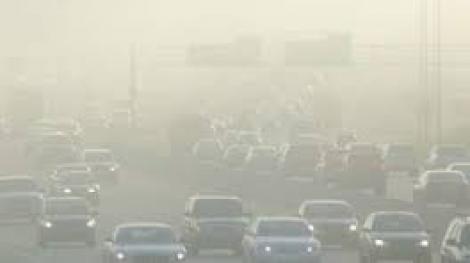Examining the impact of ultra-fine particles in airport communities
by Clara McMichael
Citing a need for a study regarding air quality and related health concerns in the communities surrounding the Seattle-Tacoma International Airport (SeaTac), Rep. Tina Orwall called a meeting that brought together representatives from federal, state, and local government as well as the Port of Seattle and community members.
“I think because it is such a fast-growing airport and we’re seeing more impact, it’s just a critical time to look at these things,” Orwall said.
Earlier in the 2016, Orwall was contacted by two concerned citizens, Rose Clark and Stewart Jenner, asking about asthma and other health issues that could be related to the proximity of SeaTac Airport.
From there, the project linked up with University of Washington professors Tim Larson, Tim Gould and Edmund Seto who had been studying the air quality at the Los Angeles International Airport. These scientists have been conducting research on ultra-fine particles and how they are associated with aircraft.
“It was so nice to learn we had such great expertise within our own state,” Orwall said.
Larson presented findings from his research at the meeting, which show that high concentrations of ultra-fine particles, consisting mainly of soot, have been observed within ten kilometers downwind of airports with a high traffic volume. Larson said that this trend appeared to be the same at SeaTac airport, but a range had not been established.
Larson said that studies detailing the health effects of ultra-fine particles associated with airports are limited.
The particles can pose a health risk because they are too small to be detected by protection mechanisms in the human body and can enter the bloodstream. There are potential links between these particles and cardiovascular issues, Alzheimers and breathing problems like asthma and COPD.
At the meeting, Burien City Councilmember Debi Wagner cited studies that have shown a higher rate of brain tumors and lung-related illnesses in the 98168 and 98198 area codes, saying that airports have been proven to pose health risks to the surrounding communities.
Orwall brought in Maria Batayola and Roseanne Lorenzana, Co-chairs of the Beacon Hill-based Community Health Advocates Collaboration who have raised similar concerns regarding air quality and airport proximity.
SeaTac City Councilmember Peter Kwon brought up a study conducted in 1997 that researched the environmental impacts of the third runway, funded by the State of Washington.
Orwall wants to conduct a new study in the upcoming year to examine the air quality in the area, which would involve partnerships throughout communities within the region and teaming up with Beacon Hill to continue Batayola and Lorenzana’s work..
Larson suggested conducting a study that would take place over a year or a year and a half, during which data would be collected and the study would be peer reviewed to add to its credibility. He proposed placing at least six air quality monitors around the area.
“I see this as a phase one,” Orwall said.
Next steps involve looking for multiple sources to fund the project; partnering with regional cities (including SeaTac Burien, Normandy Park, Des Moines and possibly Federal Way), the Port of Seattle, and airlines which fly into SeaTac; and getting feedback from community members, health department leaders, and groups within the state which work on these issues. Orwall will contact the cities involved and circulate a draft of the study proposal from the University of Washington.
Orwall said that this survey could potentially impact the Environmental Protection Agency and its policies regarding airports.
“We need to move fairly quickly,” Orwall said.
